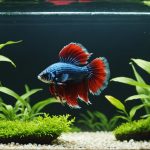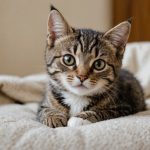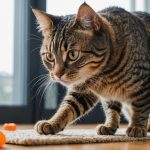Preparing for the Vet Visit
When planning a cat vet visit, aim to schedule appointments during calm periods of the day. This practice can help reduce stress for both you and your cat, as waiting times are usually shorter and the environment is less chaotic.
To ensure a smooth experience, prepare a checklist of essential items to bring along. Some important things to remember include:
En parallèle : Welcoming a New Baby: Essential Tips for Easing Your Cat”s Transition
- Your cat’s medical history
- A comfort item like your cat’s favourite towel or toy
- A sample of their regular food, in case of dietary questions
- Any specific concerns or questions you want to discuss with the veterinarian
Acclimating your cat to the carrier is crucial before the visit. Introduce the carrier well in advance, allowing them to explore and familiarise themselves with it gradually. You could place treats or toys inside to create a positive association. This preparation can significantly ease the journey to the clinic, making it less stressful for your feline friend.
Preparation is pivotal in ensuring a successful vet visit. By following these veterinarian tips, you can make the experience as pleasant and stress-free as possible for both you and your cat.
A lire aussi : Creative Strategies to Enhance Indoor Enrichment for Cats with FIV or FeLV
Calming Techniques for Your Cat
When it comes to reducing vet anxiety, employing calming techniques can transform your cat’s experience. One effective method is the use of pheromone sprays or diffusers. These products mimic the natural pheromones that help cats feel safe and secure. Simply place a diffuser in the room where your cat spends most of their time, or spray the carrier before travel.
Travel itself can be a major source of stress for cats. To keep your cat calm during travel, ensure the carrier is cosy and lined with familiar-smelling bedding. Covering the carrier with a light blanket can also help reduce visual stressors. Give them a small favourite toy to provide comfort.
Upon arrival at the vet’s office, creating a relaxing environment is crucial. Find a quiet corner in the waiting room, away from other animals if possible. Speak softly and gently to your cat, reassuring them with a soothing voice. Bringing along a towel that carries your scent can also provide additional calmness, familiar to your cat.
These strategies combined can significantly alleviate your cat’s anxiety, making the vet visit less daunting.
Communication with the Veterinarian
Effective vet communication is crucial for discussing pet health during visits. Preparing in advance can help facilitate a more productive consultation with your veterinarian. It is beneficial to compile a list of questions and concerns before the appointment. This approach ensures all your worries are addressed and nothing is overlooked during the sometimes brief interaction with a vet.
Sharing your cat’s health history is another vital component. This information provides the veterinarian with a comprehensive understanding of your pet’s past medical issues, treatments, and any recurring health patterns. Such details can be crucial for accurate diagnosis and developing an appropriate care plan.
Conveying your cat’s behaviour accurately to the veterinarian also plays a significant role. Observe any changes in your cat’s usual behaviour, habits, or physical condition prior to the visit. Describe these observations in clear, precise terms to help the veterinarian evaluate the situation accurately. This level of detail enhances the vet’s ability to recommend the best course of action tailored to your pet’s specific needs.
In essence, good communication not only relieves worry for the cat owner but also supports the veterinarian in maintaining the optimal health and well-being of your beloved pet.
Creating a Positive Experience
Ensuring a positive vet visit can significantly reduce stress for pets and their owners. One effective strategy is reinforcing positive behavior with treats during the visit, helping your pet associate the experience with positive rewards. This simple tactic can make future visits more enjoyable and less daunting.
Familiar smells and items, like a favourite blanket or toy, can also play a critical role in improving vet experiences. These belongings provide a sense of comfort, making the unfamiliar environment feel more approachable. The presence of such items is often soothing, helping to alleviate anxiety naturally.
After the vet visit, engaging in post-visit care can transform the experience into a bonding opportunity. Whether it’s a gentle grooming session or playtime, these post-visit rituals further reassure your pet of your care and companionship. By connecting these activities to vet visits, you can significantly mitigate any associated stress or fear, cultivating a more positive association over time.
Follow-Up Care After the Visit
After a veterinary appointment, it’s crucial to focus on post-vet care to ensure ongoing cat health maintenance. Monitoring your cat’s behaviour is the first step. Watch for any changes in appetite, activity levels, or temperament. These observations can provide essential insights into their recovery and well-being.
It’s common for cats to feel unsettled after a vet visit. Re-establishing routines can help your cat acclimate back to their normal environment. Keep feeding, playing, and resting schedules consistent to provide a sense of security and normalcy. Gradually reintroducing activities will ease them back into their regular habits.
Planning for follow-up visits or treatments may be necessary, depending on your cat’s condition. Discuss with your vet the specific needs your cat may have and create a schedule for check-ups or additional treatments. This ensures that any health issues are managed proactively and effectively.
By being attentive and proactive in your cat’s post-vet care, you help maintain their health and happiness. This ensures they return to being their playful and spirited self as soon as possible.










